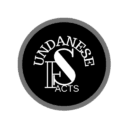Knowing Sisingaan: A Tradition from Subang – History, Materials, and Meaning
Sisingaan originates from Subang, West Java. Known also as Gotong Singa or Odong-odong, this traditional performance art was first developed by the Subang people as a form of resistance against colonial rulers.
This cultural expression symbolized the defiance of Subang residents, showing that they were not afraid to stand up against colonial oppression. Nowadays, Sisingaan is showcased during special events, such as welcoming esteemed guests, children’s circumcision ceremonies, or national celebrations.

History of Sisingaan
Subang, a region in West Java, is rich in natural resources. During the colonial era, one of the most notable companies in the area was Pamanoekan en Tjiasemlanden (P&T Land).
At that time, the residents were introduced to their rulers’ national emblems, such as the crown symbolizing Dutch authority. Simultaneously, Subang was also under British control, symbolized by the lion. This dual domination—Dutch politics and British economics—placed immense political, economic, social, and cultural pressure on Subang’s people.
In response, the people of Subang began to resist subtly through metaphors, symbolism, and personifications that reflected their situation. One such form of expression was the creation of Sisingaan, which symbolized their dissatisfaction and efforts to rebel against colonial rulers.
Colonial authorities viewed Sisingaan as merely an art form created to entertain local children during circumcision ceremonies.
Materials of Sisingaan
From its inception to the present day, the Sisingaan is crafted as Singa Abrug. This form of Sisingaan is played with dynamic movements, with lion statues actively paraded and sometimes even “dueling” during performances.
The lion statues are constructed using simple materials:
- Head and Face: Made from lightweight wood, such as randu or albasiah.
- Mane: Composed of flower fibers or pine leaves.
- Body: Crafted from carangka (bamboo weaving) covered with burlap.
- Structure: Can also be made from intact wooden logs or cylindrical wooden planks.
Sisingaan Performances
A Sisingaan performance begins with dynamic music. The bearers perform a series of movements, including:
- Pasang kuda-kuda,
- Bangkaret,
- Anjang-ancang,
- Gugulingan,
- Jeblag, and more.
The lion effigies are carried through villages, towns, or city streets, culminating in a return to the starting point.
Over time, the accompanying music evolved, incorporating dynamic styles like genjring bonyok and tardug.
Sisingaan Performers
A typical Sisingaan ensemble consists of:
- Eight bearers
- A pair of lion statues
- Musical instruments (waditra)
- Musicians (nayaga)
- Singers (sinden or juru kawih)
Each lion statue is carried by four bearers with one rider on top.
The performers must possess specific skills, as Sisingaan is a collective art form requiring harmony between the music and movements. Each element carries a symbolic meaning:
- Four bearers: Represent the oppressed local people.
- Lion statues: Depict the two colonial rulers (Dutch and British).
- Rider: Symbolizes the younger generation capable of ousting the oppressors.
- Musicians: Reflect the joyous spirit of Subang’s people motivating the youth.
Meaning of Sisingaan
For the Subang community, Sisingaan holds significant meaning.
- Socially: It reflects the people’s deeply rooted artistic spirit and their theatrical culture.
- Economically: Sisingaan has become a vital contributor to the local economy.
Although West Java does not naturally host lions, this art form is accepted as part of the region’s traditional heritage. Spiritually, the Subang people regard Sisingaan as a symbol of gratitude and prayers for safety and prosperity bestowed by God.
Explanation of Sisingaan
Sisingaan is a traditional Subang performance art featuring lion effigies carried by bearers. The art symbolizes resistance against colonial rulers while promoting communal harmony. With its vibrant music and dynamic movements, Sisingaan reflects Subang’s cultural pride, blending art with social and spiritual values.
Read More:
Ronggeng Amen: Exploring the Cultural Legacy of Pangandaran’s Traditional Dance







